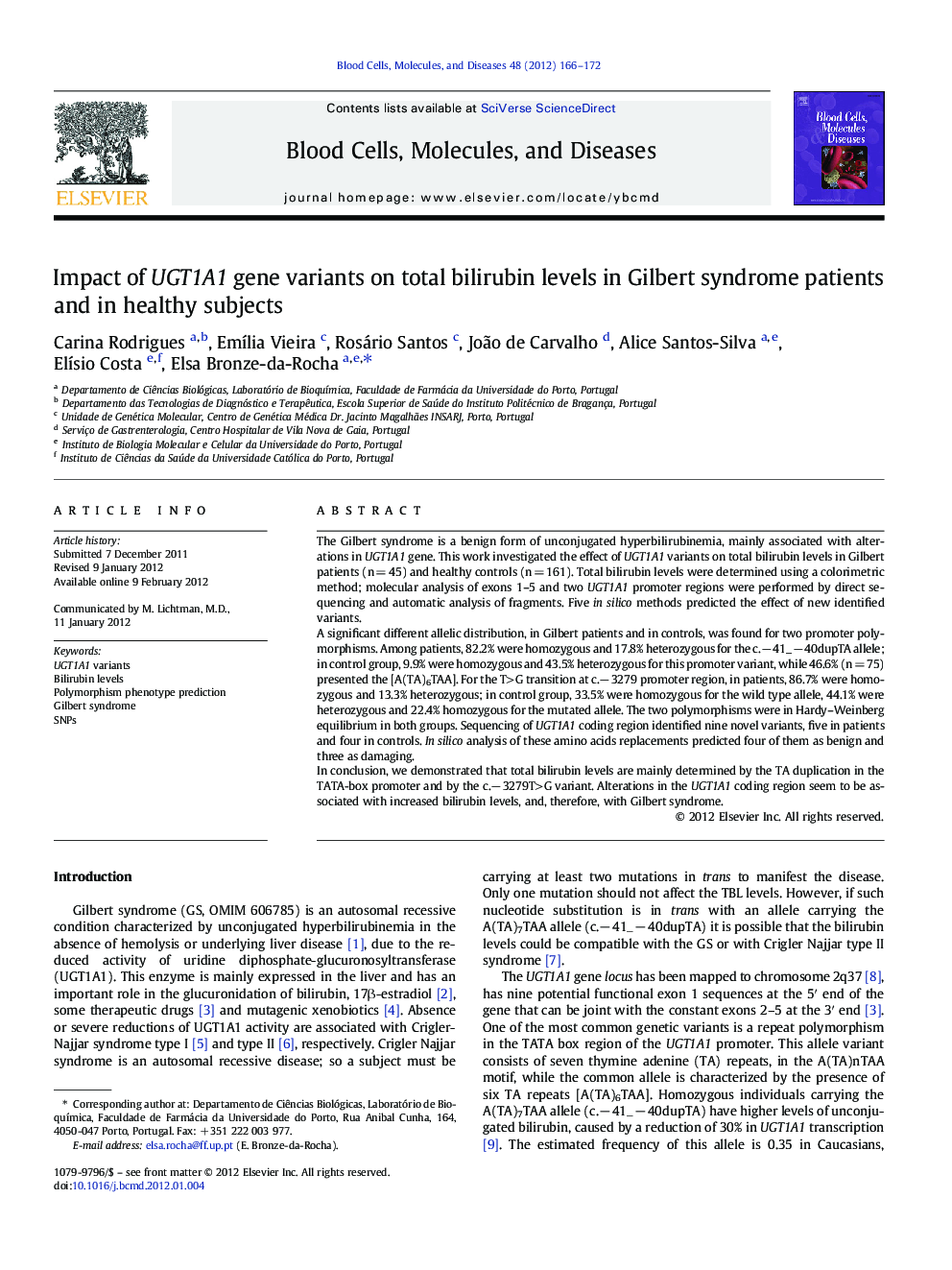| Article ID | Journal | Published Year | Pages | File Type |
|---|---|---|---|---|
| 2827423 | Blood Cells, Molecules, and Diseases | 2012 | 7 Pages |
The Gilbert syndrome is a benign form of unconjugated hyperbilirubinemia, mainly associated with alterations in UGT1A1 gene. This work investigated the effect of UGT1A1 variants on total bilirubin levels in Gilbert patients (n = 45) and healthy controls (n = 161). Total bilirubin levels were determined using a colorimetric method; molecular analysis of exons 1–5 and two UGT1A1 promoter regions were performed by direct sequencing and automatic analysis of fragments. Five in silico methods predicted the effect of new identified variants.A significant different allelic distribution, in Gilbert patients and in controls, was found for two promoter polymorphisms. Among patients, 82.2% were homozygous and 17.8% heterozygous for the c.− 41_ − 40dupTA allele; in control group, 9.9% were homozygous and 43.5% heterozygous for this promoter variant, while 46.6% (n = 75) presented the [A(TA)6TAA]. For the T>G transition at c.− 3279 promoter region, in patients, 86.7% were homozygous and 13.3% heterozygous; in control group, 33.5% were homozygous for the wild type allele, 44.1% were heterozygous and 22.4% homozygous for the mutated allele. The two polymorphisms were in Hardy–Weinberg equilibrium in both groups. Sequencing of UGT1A1 coding region identified nine novel variants, five in patients and four in controls. In silico analysis of these amino acids replacements predicted four of them as benign and three as damaging.In conclusion, we demonstrated that total bilirubin levels are mainly determined by the TA duplication in the TATA-box promoter and by the c.− 3279T>G variant. Alterations in the UGT1A1 coding region seem to be associated with increased bilirubin levels, and, therefore, with Gilbert syndrome.
